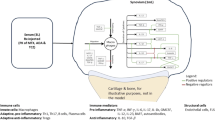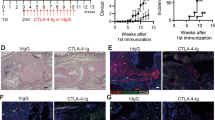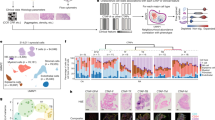Abstract
Aim:
To evaluate single-dose and multiple-dose pharmacokinetics of cytotoxic T-lymphocyte-associated antigen 4 fusion protein (CTLA4Ig) in healthy volunteers and patients with rheumatoid arthritis (RA).
Methods:
The clinical trials included two phase I open studies: study 1 was an open-label dose-escalation study in 27 healthy volunteers and study 2 was a single-group, open-label study in patients with rheumatoid arthritis. In study 2, 9 patients were arranged to receive 10 mg/kg of CTLA4Ig at 0, 2, 4, 8, 12, and 16 weeks. The concentration-time data obtained by a validated ELISA method were subjected to non-compartmental pharmacokinetic analysis by DAS 2.1 software.
Results:
In study 1, serum CTLA4Ig concentrations climbed rapidly to the peak and declined slowly with a t1/2 of 15.1±2.6 d, 14.2±2.3 d, and 11.8±1.2 d after a single infusion of 1, 10, and 20 mg/kg, respectively. Cmax and AUC0–∞ increased proportionally with the dose. In study 2, the steady-state condition for CTLA4Ig following multiple doses of 10 mg/kg appeared to be attained at the fourth dose (d 56), with peak and trough concentrations of 239.8±45.3 mg/L and 20.5±7.9 mg/L, respectively. After multiple infusions, serum concentrations dropped slowly and the terminal half-life was 12.6±4.7 d.
Conclusion:
Intravenous infusion of CTLA4Ig was well tolerated in healthy volunteers and patients with rheumatoid arthritis. CTLA4Ig exhibited linear pharmacokinetics over the dose range of 1 to 20 mg/kg in healthy volunteers. The pharmacokinetics in RA patients appeared to be similar to that in healthy volunteers. No system accumulation appeared upon repeated infusions of 10 mg/kg every 4 weeks.
Similar content being viewed by others
Log in or create a free account to read this content
Gain free access to this article, as well as selected content from this journal and more on nature.com
or
References
Genovese MC, Becker JC, Schiff M, Luggen M, Sherrer Y, Kremer J, et al. Abatacept for rheumatoid arthritis refractory to tumor necrosis factor alpha inhibition. N Engl J Med 2005; 353: 1114–23.
Judith RA, Mark GL, Cynthia AG, Brian VJ, Michael TG, Bernard SG, et al. CTLA4Ig-mediated blockade of T-cell costimulation in patients with psoriasis vulgaris. J Clin Invest 1999; 103: 1243–52.
Kremer JM, Westhovens R, Leon M, Eduardo DG, Rieke A, Serge S, et al. Treatment of rheumatoid arthritis by selective inhibition of T-cell activation with fusion protein CTLA4Ig. N Engl J Med 2003; 349: 1907–15.
Choy EH, Panayi GS . Cytokine pathways and joint inflammation in rheumatoid arthritis. N Engl J Med 2001; 344: 907–16.
John JE, Timothy JS, James PA . CTLA-4 overexpression inhibits T cell responses through a CD28-B7-dependent mechanism. J Immunol 2006; 177: 1052–61.
Todd DJ, Costenbader KH, Weinblatt ME . Abatacept in the treatment of rheumatoid arthritis. Int J Clin Pract 2007; 61: 494–500.
Grennan DM . Re: An association between the CTLA4 exon 1 polymorphism and early rheumatoid arthritis with autoimmune endocrinopathies, by Vaidya et al. Rheumatology (Oxford) 2002; 41: 180–3.
Knoerzer DB, Karr RW, Schwartz BD, Mengle LJ . Collagen-induced arthritis in the BB rat. Prevention of disease by treatment with CTLA-4-Ig. J Clin Invest 1995; 96: 987–93.
Moreland LW, Alten R, Van den Bosch F, Appelboom T, Leon M, Emery P, et al. Costimulatory blockade in patients with rheumatoid arthritis: a pilot, dose-finding, double-blind, placebo-controlled clinical trial evaluating CTLA-4Ig and LEA29Y eighty-five days after the first infusion. Arthritis Rheum 2002; 46: 1470–9.
Kremer JM, Dougados M, Emery P, Durez P, Sibilia J, Shergy W, et al. Treatment of rheumatoid arthritis with the selective costimulation modulator abatacept: twelve-month results of a phase IIb, double-blind, randomized, placebo-controlled trial. Arthritis Rheum 2005; 52: 2263–71.
Zhou Q, Qian WZ, Kou G, Wang H, Liu YJ, Li XD, et al. Effect of CTLA4Ig fusion protein on human T lymphocytes. Chin Pharmacol Bull 2002; 18: 165–8.
Zhou Q, Kou G, Qian WZ, Wang H, Liu YJ, Wang, XY, et al. Treatment of murine allergic contact dermatitis with CTLA4-Ig. Chin J Dermatol 2002; 35: 256–9.
Li ZG, Li J, Wen N, Tang Y, Yuan L, Wang XL, et al. Pharmacokinetic study of I125-CTLA4Ig: absorption, distribution and excretion after a single intravenous administration to rat. Chin J Pharm Anal 2007; 27: 949–53.
Nadler S, Townsend R, Mikesell, G. Abatacept (CTLA4-IG; BMS-188667) significantly inhibits T-cell proliferation in vitro at clinically relevant concentrations. Ann Rheum Dis 2004; 63 Suppl 1: 142.
Wei SL, Zhang Q . Biopharmaceuticals and pharmacokinetics. 2nd ed. Beijing: Peking University Medical Press; 2004.
Acknowledgements
This project was supported by the National Natural Science Foundation of China, Shanghai Commission of Science & Technology, Ministry of Science and Technology of China (973 & 863 Program Projects), and Shanghai Pudong Commission of Science & Technology.
Author information
Authors and Affiliations
Corresponding authors
Rights and permissions
About this article
Cite this article
Ma, Y., Lin, Br., Lin, B. et al. Pharmacokinetics of CTLA4Ig fusion protein in healthy volunteers and patients with rheumatoid arthritis. Acta Pharmacol Sin 30, 364–371 (2009). https://doi.org/10.1038/aps.2009.13
Received:
Accepted:
Published:
Issue date:
DOI: https://doi.org/10.1038/aps.2009.13
Keywords
This article is cited by
-
Implantable niche with local immunosuppression for islet allotransplantation achieves type 1 diabetes reversal in rats
Nature Communications (2022)
-
Body mass index and clinical response to intravenous or subcutaneous abatacept in patients with rheumatoid arthritis
Clinical Rheumatology (2017)
-
CTLA4-Ig in B7-1-positive diabetic and non-diabetic kidney disease
Diabetologia (2016)
-
Generation and Preclinical Characterization of a Fc-optimized GITR-Ig Fusion Protein for Induction of NK Cell Reactivity Against Leukemia
Molecular Therapy (2013)
-
Modeling pharmacokinetics/pharmacodynamics of abatacept and disease progression in collagen-induced arthritic rats: a population approach
Journal of Pharmacokinetics and Pharmacodynamics (2013)



